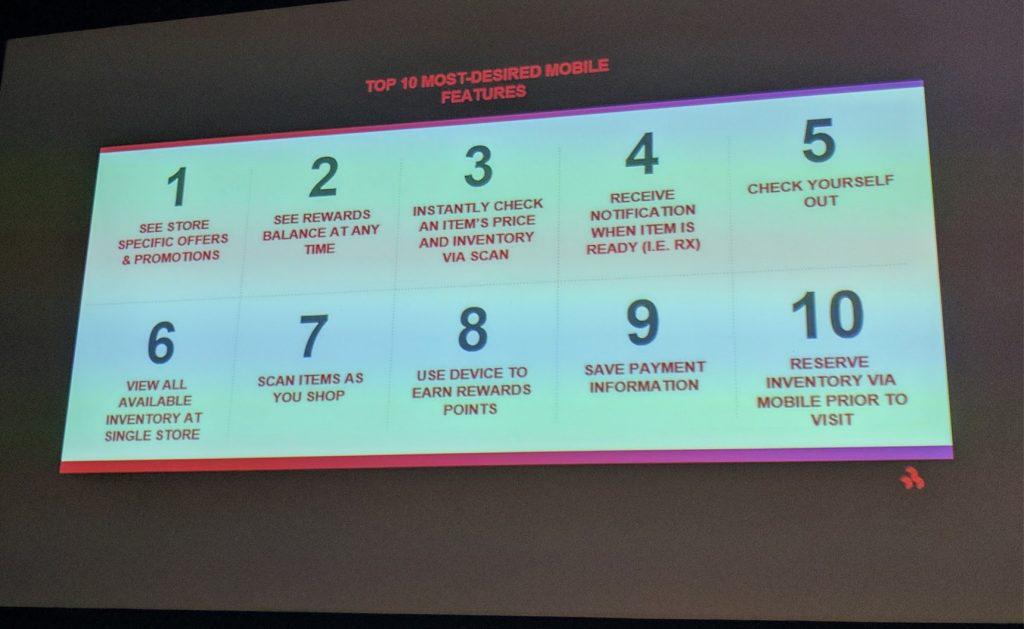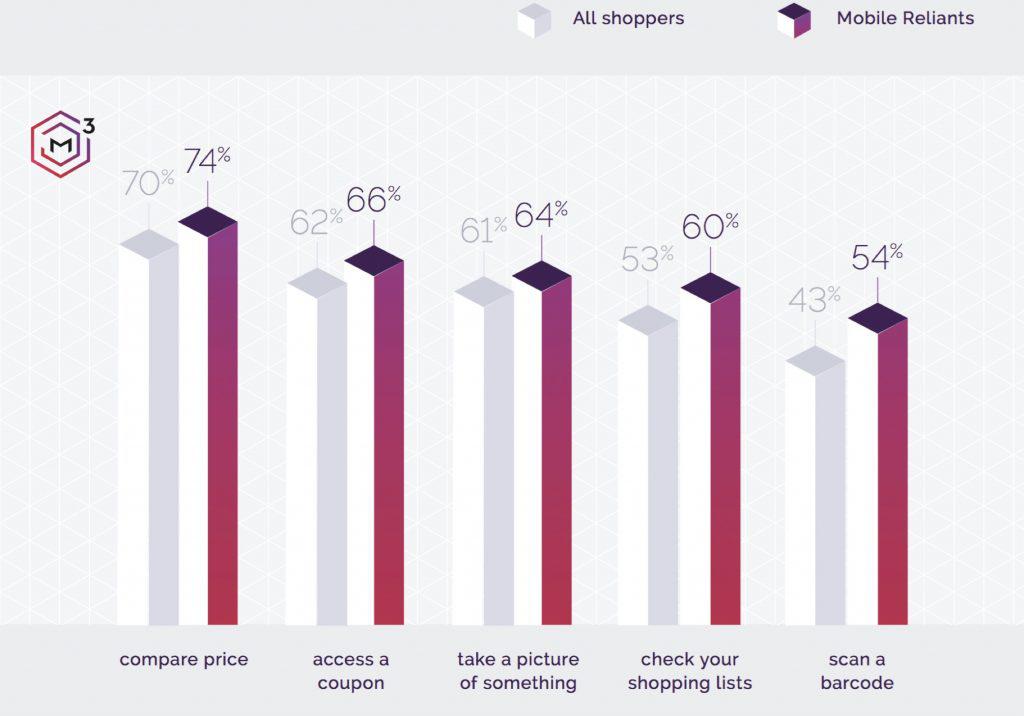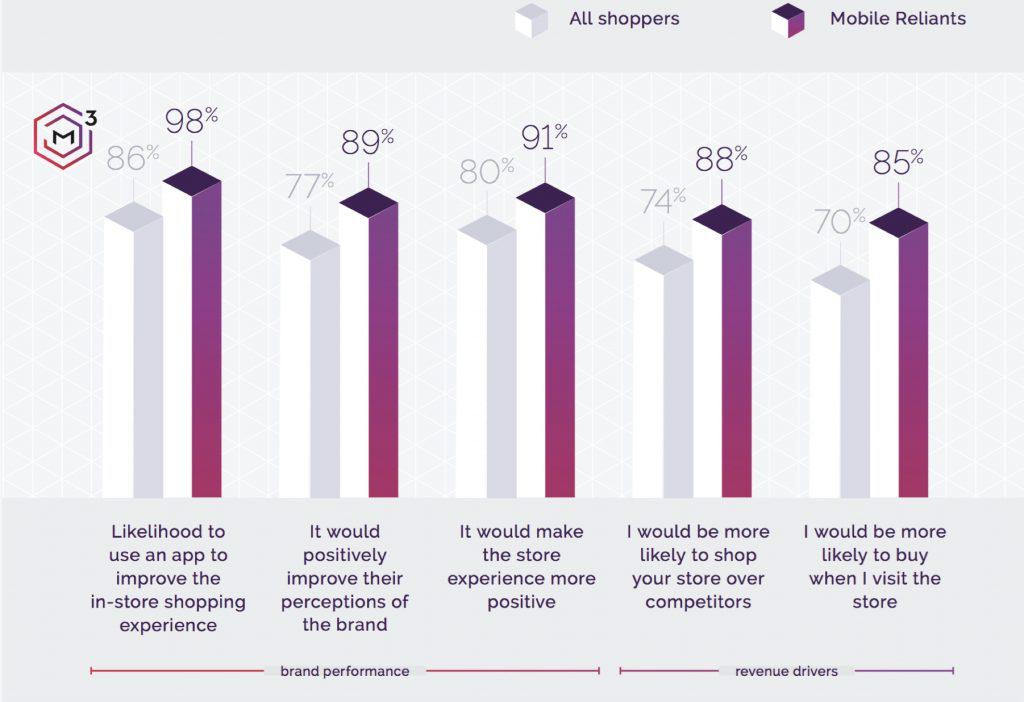How Retailers Are Failing The Mobile In-Store Shopping Experience
Retailers are groping in the dark to figure out the in-store experience in an era where consumer behavior has shifted overnight.
According to Deloitte, 47% of consumers are satisfied with their in-store experience. Only 41% are satisfied with the products they are finding in stores.
And yet, people buy. Brick and mortar retail accounted for about 90% of all retail revenue in 2016. Ecommerce is growing and had a strong holiday season with 19% of all retail purchases from November 1 to December 24th, 2016 made online.
In the current context, physical purchases are still the default. But that doesn’t mean digital plays no role in the buying experience. Deloitte estimates that digital had an influence over $1.8 trillion in retail purchases in 2016.
And here is a honest fact:
Retailers are failing when it comes to the in-store digital experience. In 2017, that means retailers are failing the mobile experience.
Failing The Mobile Shopper
Mobile solutions firm DMI has quantified precisely how badly top retailers are failing to provide quality in-store mobile experiences. Over the last two years, DMI has sent 5,000 shoppers onto the world to test the in-store mobile experience of 200 retailers in the United States and Europe.
The DMI Mobile Maturity report benchmarked retailers and found that stores in the U.S. had a benchmark rating of 20 (out of 100) of in-store mobile experiences against customer expectations. European stores faired worse, with a benchmark score of 17.
“The insights are not all that surprising to me,” said Jeremy Gilman, vice president of strategy at DMI at the National Retail Federation’s “Big Show” in New York City. DMI notes that 77% of U.S. shoppers have used their smartphone in store to help them shop. They also purchase stuff with their smartphones, either with mobile apps (62%) or the mobile Web (65%). Shoppers are slightly less likely to use retailer branded apps (39%) than third-party apps (41%).

How, precisely are retailers failing? The DMI report says that consumers are looking for six key mobile experiences from retailers:
- Pricing: Are there promotions? Can a customer scan an item to see the price?
- Inventory: Is the product available? How long will it take?
- Product reviews and advice: Is the product right for the customer? Is it any good? Or is it Tommy Boy’s version of a guarantee?
- Personalization: Is the product in my size? My favorite color? Does the store know enough about me to know what I want, how I want it and when I want it?
- Store guidance: Where is everything anyway?
- Checkout and loyalty: Can you pay with your phone? Can you check yourself out without have to wait in line? Can you check your rewards balance any time on your phone?
Mobile Reliants: The Most Demanding Customers
In the course of its study, DMI found that there is a subset of the customer population that retailers need to focus on. They are called “Mobile Reliants” and they are people that use their smartphone for just about everything, all the time.
Mobile Reliants make purchases with their smartphones and use their smartphones just about every time they enter a store. They have multiple shopping apps on their smartphone and are savvy about using their ever-present computers to make their buying journeys more informed.
Mobile Reliants make up a third of shoppers in the United States. A quarter of Mobile Reliants make purchases via smartphone very frequently or all the time. They are primarily between 25 and 34 years old, tend to make more money (30% of Mobile Reliants have incomes over $150,000 a year) and shop more than non-Mobile Reliants.

DMI’s finding of the Mobile Reliants is very similar to what Phoenix Marketing International calls “golden customers” that are more frequent users of mobile payments. Phoenix Marketing International says golden customers tend to be from 30 to 39 years old and make more than $75,000 a year.
The gist: mobile heavy shoppers are worth more, shop more frequently, are highly demanding and are influencers over shopping behavior of both the retailer and other shoppers.
Serve Mobile Reliants And Gain Customer Loyalty
DMI found that retailers that tailor the in-store experience to high volume mobile users are more likely to gain loyalty from those shoppers.
Mobile Reliants are 89% more likely to have a positive perception of a brand that suits their needs, 85% more likely to buy when they visit a store, 88% more likely to shop at a store than a competitor and are 98% more likely to use an app when shopping. Of Mobile Reliants, 91% believe that better mobile experiences make the entire in-store shopping experience more positive.
“If you serve the mobile reliant population, they are more likely to give you more business and identify with your brand,” said Gilman.

The difference between the so-called Mobile Reliants and other customers is not great. Most U.S. shoppers (82%) use their phone nearly all day. Serving the heaviest mobile users also means serving everybody.
“If we do it, customers are telling us that they will reward us with a positive experience and their loyalty,” said Gilman.




